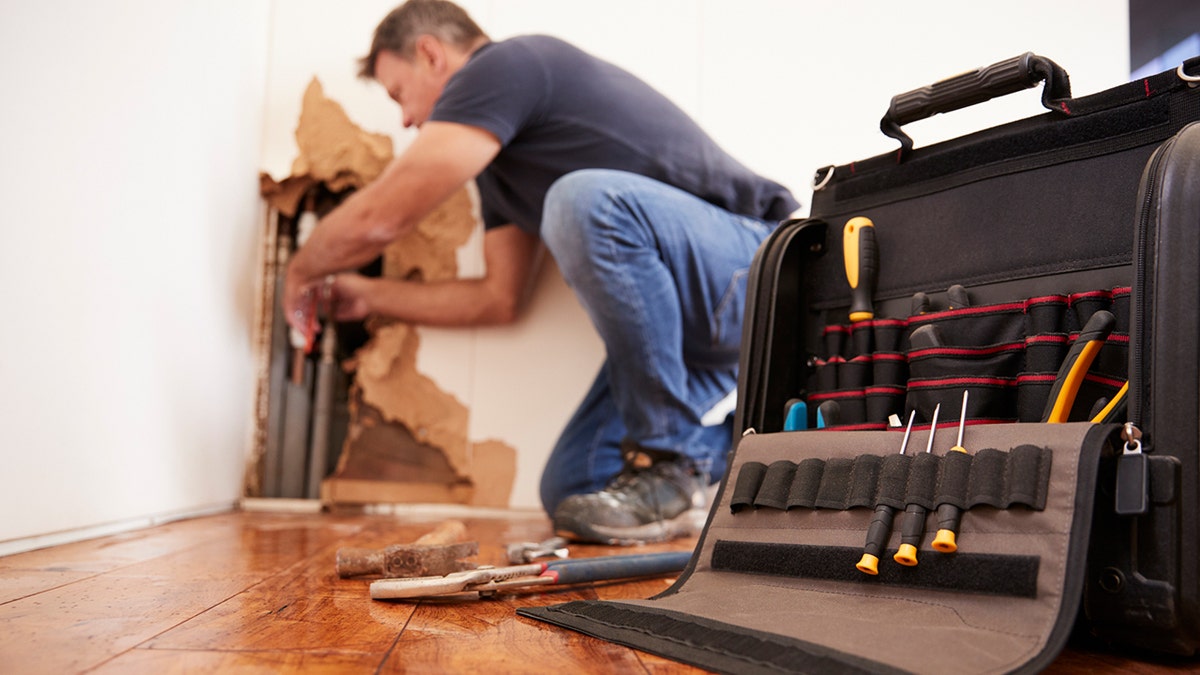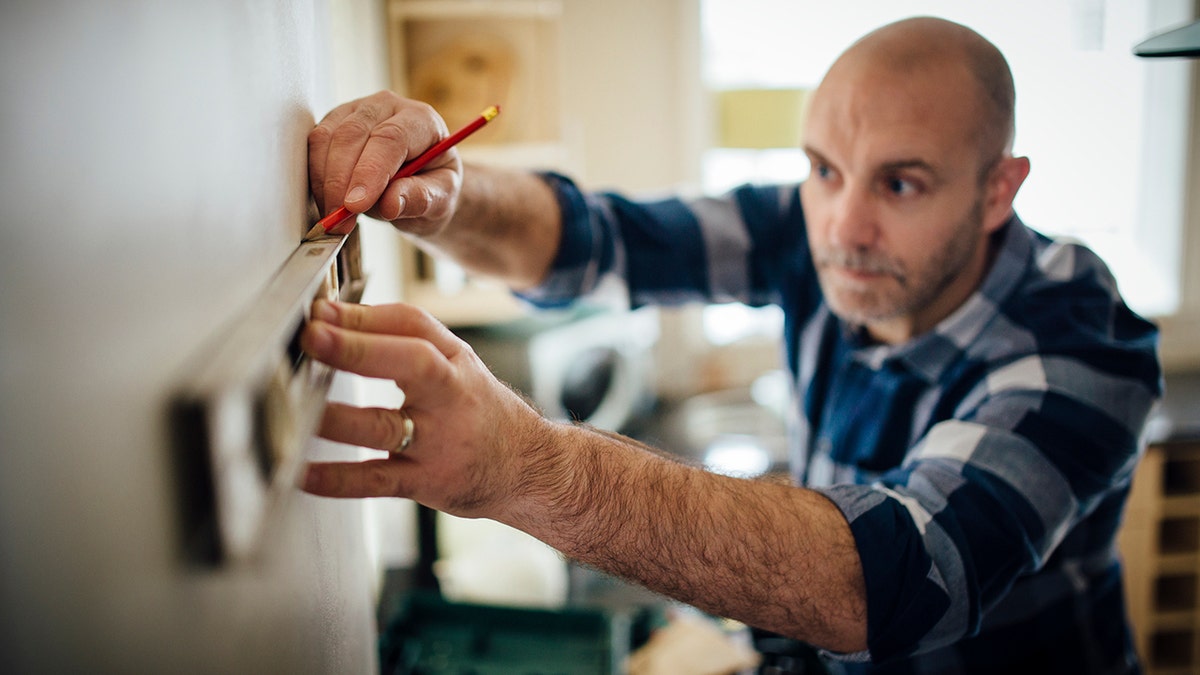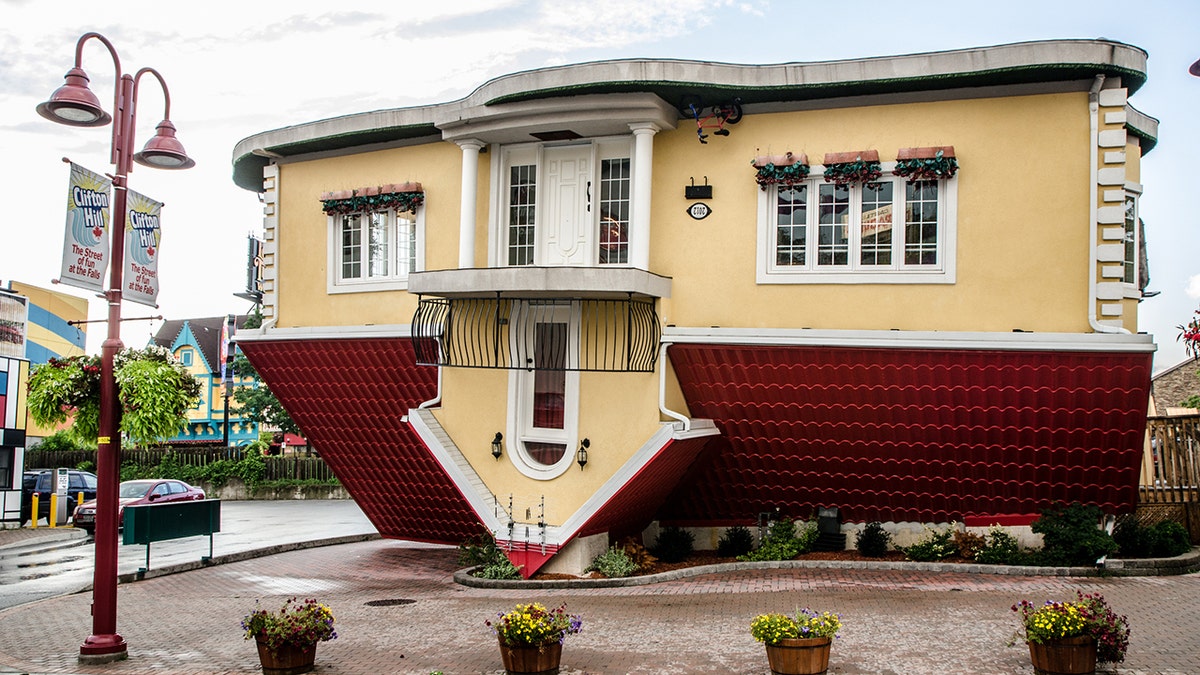
This guy looks like he's off to a promising start. (iStock)
“Renovating my house was a piece of cake," said no one ever.
Indeed, even seemingly simple projects, like installing a screen door, staining hardwood floors, or refacing kitchen cabinets, can surprise homeowners with unexpected challenges and ever-escalating costs. And the problems multiply if you make certain all-too-common mistakes.
We’re not trying to discourage you from renovating your house, but if you’re planning to give your house a face-lift, be sure to avoid these seven renovation fumbles.
1. Starting without a plan
Fact: Only fools rush into home renovations. To conserve time and money, you should create a detailed, step-by-step plan of what the work will entail instead of just “winging it.”
More From Realtor.com
For example, to add a tile accent to your kitchen or bathroom, you need to gather the right tools (tile spacers, goggles, measuring tape, etc.), turn off the power to the area you’ll be tiling, mix and spread the mortar, and install the tile in small sections.
2. Hiring a handyman when you need a licensed contractor
You can certainly use a handyman to take care of minor tasks, such as fixing broken windows, swapping out old ceiling fans for palm blades, or repairing a leaky toilet. But for more complicated projects, you’ll want to hire a professional who specializes in the type of work you need done.
While you may have to pay more for a licensed contractor, doing so gives you peace of mind that the work will be of high quality. You also get an extra layer of legal protection, since licensed contractors typically need to have insurance that protects customers if they fail to complete the job properly.
Pro tip: Don’t just hire the cheapest contractor you can find. Instead, get bids from at least three contractors, research online reviews, and talk to former customers before choosing whom you want to work with.
3. Overestimating your renovation skills
One obvious way to save money is to skip hiring a contractor and do renovations yourself. But that’s not always a good idea.
“DIY is OK for making aesthetic updates, like replacing a kitchen’s backsplash or retiling a bathroom, but there are major safety risks when you remove walls,” says Jesse Fowler, president of Tellus Design + Build, based in Southern California. (Read: If you don’t know how to handle plumbing issues, repair ductwork, or wield a sledgehammer, leave it to a pro.)

While you're at it, just go ahead and skip the "measuring" part too. (iStock)
Also, consider that if you have to redo the work, you may have to spend twice the amount of money to fix the damage you’ve done, says Allen Shayanfekr, co-founder and CEO of Sharestates, an online crowdfunding platform for real estate financing.
4. Underestimating renovation costs
Pricing out some home improvement projects is fairly straightforward. If you’re replacing a washer and dryer, it’s fairly easy to calculate how much the new appliances and installation cost. However, budgeting for bigger renovations can be trickier, especially if you have to tear down walls, which could reveal problems (e.g., mold) hiding behind the drywall. Hence, it’s no surprise that 36 percent of last year’s home renovators said staying on budget was their No. 1 challenge, a recent Houzz survey found.
Do thorough research on the total cost of your project (for structural changes, don’t forget permit fees, which can be substantial), and then add a 10- to 15-percent cushion so that you have room in your budget for unforeseen expenses.
5. Buying cheap materials
It might be tempting from a cost-savings perspective, but you don’t want to skimp on building materials. For one thing, cheap materials tend to have a shorter life span. They are also more susceptible to damage and, in some cases, can even create health risks if they contain toxic chemicals, says the Healthy Building Network, a nonprofit that researches and publishes information on the sustainability of building materials.
You don’t need to buy the most expensive materials, but make sure you factor in quality when planning your renovation designs.
6. Making your house clash with the neighborhood
One way to sour relationships with neighbors — and hurt your home’s resale value — is to make renovations that change your house’s facade so sharply, it clashes with other homes in the neighborhood.
For instance, if you live in a community with Craftsman bungalows, transforming your house into a Cape Cod or Mid-Century Modern style might make your home stand out in a bad way.

Similarly, flipping your house on its roof is probably a poor idea. (iStock)
Similarly, you don’t want your house to be the largest one on the block. (On that note, have you heard McMansions are falling out of favor with young home buyers?)
7. Neglecting safety measures
Safety always comes first, and with respect to home renovations, that means you have to take precautions throughout the project. Research from the Home Safety Council shows that of the 43 million DIYers taking on projects each year, 1 in 5 ends up in the hospital because of accidents that relate to those projects.
Be sure to wear safety glasses and a hard hat when needed, and earplugs during loud construction. Also, practice proper ladder safety. If you’re creating a large mess, a lot of dust, or paint fumes, it might be best to stay at a hotel until the work is complete.
This article originally appeared on Realtor.com as "Demolition Daze: 7 Ways to Botch Renovating a Home."